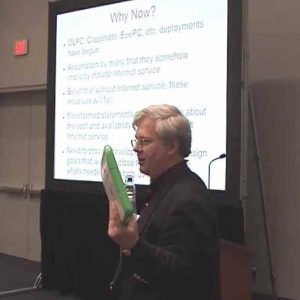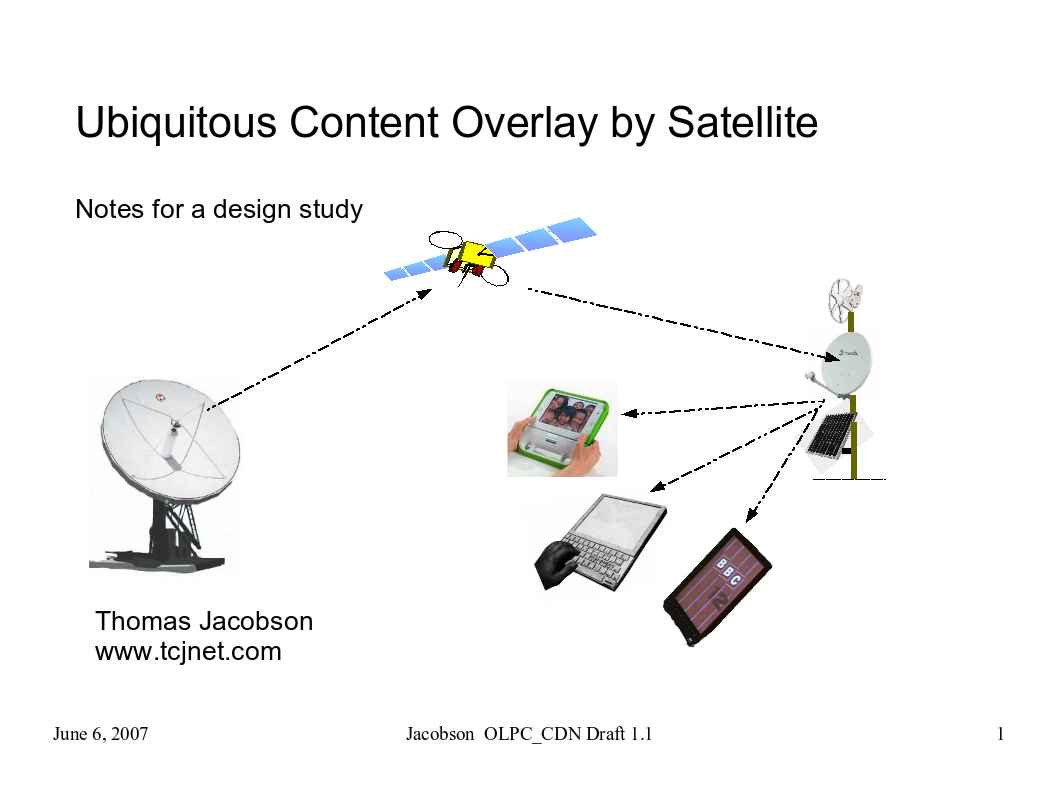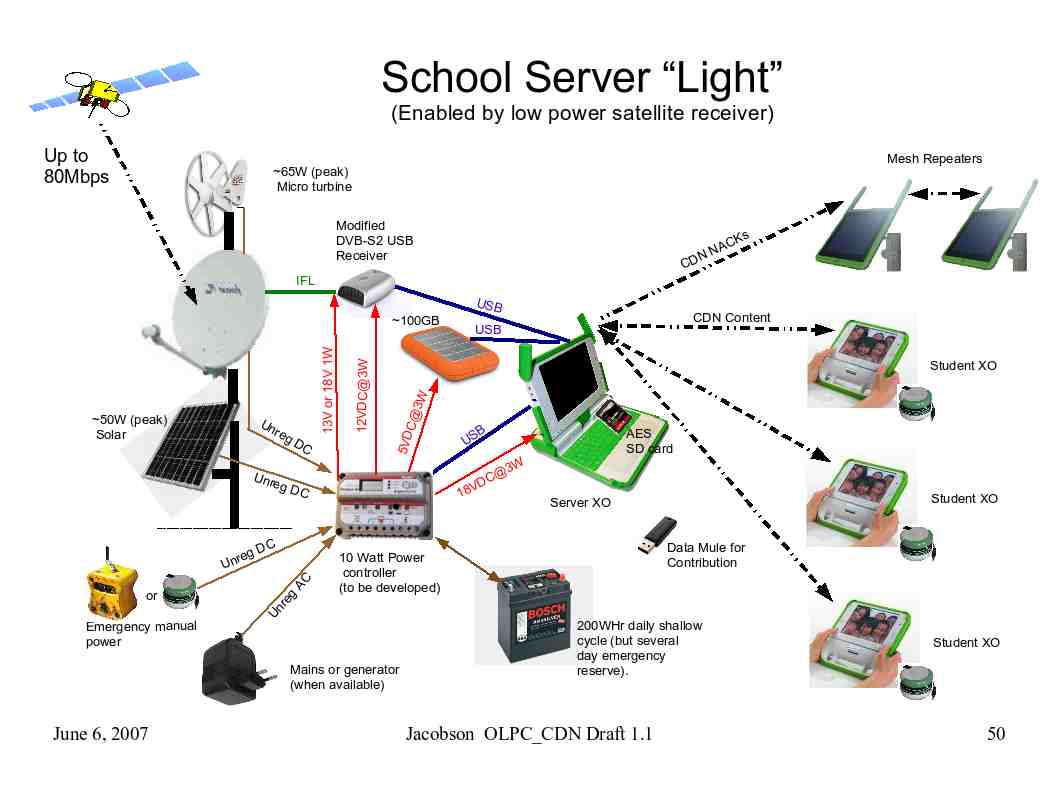xosat

I have had a long term interest in exploring how to build low cost satellite infrastructure to support educational projects, starting with a visit and discussions at UNESCO in Paris in 1979, and and more recently an interest in the MIT One Laptop Per Child (OLPC) XO laptop project.

Here is an XO given to me by OLPC when I gave a talk at their HQ in Cambridge MA, (these days a tablet is probably better…).
The link below points to a pdf of some Impress slides for a talk I was invited to give to OLPC staff at MIT, outlining a low cost ($100 per receiver), fast (up to 80Mbps), solar powered (4Watt receiver) content delivery network. With a monthly cost of around 25 cents/student in large deployments it could be implemented immediately, and is complementary to other Internet connectivity such as Wifi mesh, data-mule, or two-way satellite.
Ubiquitous Content Overlay by Satellite
Pages 1-43 of this pdf contains full size slides, pages 44-96 contains slides w/notes (best to read)
Together with Roland Burger we organized a special session at Satellite 2008 in Washington DC, where I gave an overview talk:

I had intended to do a version 2 that gets down to actual satellite link budgets, and exact costs, etc. based on a traffic model and deployment scenario, but the community showed little interest, partly because of misleading and over optimistic claims by large satellite operators. Now days it has changed, with the advent of Musk’s Starlink service and similar, but a broadcast overlay may still make some sense.
One interesting issue that came up while exploring this was non-technical. For an international program, who gets to decide what educational content gets disseminated to the students? This gets especially thorny when dealing with some developing countries where religious dogma plays a role in government.

